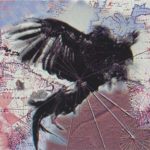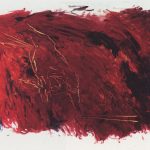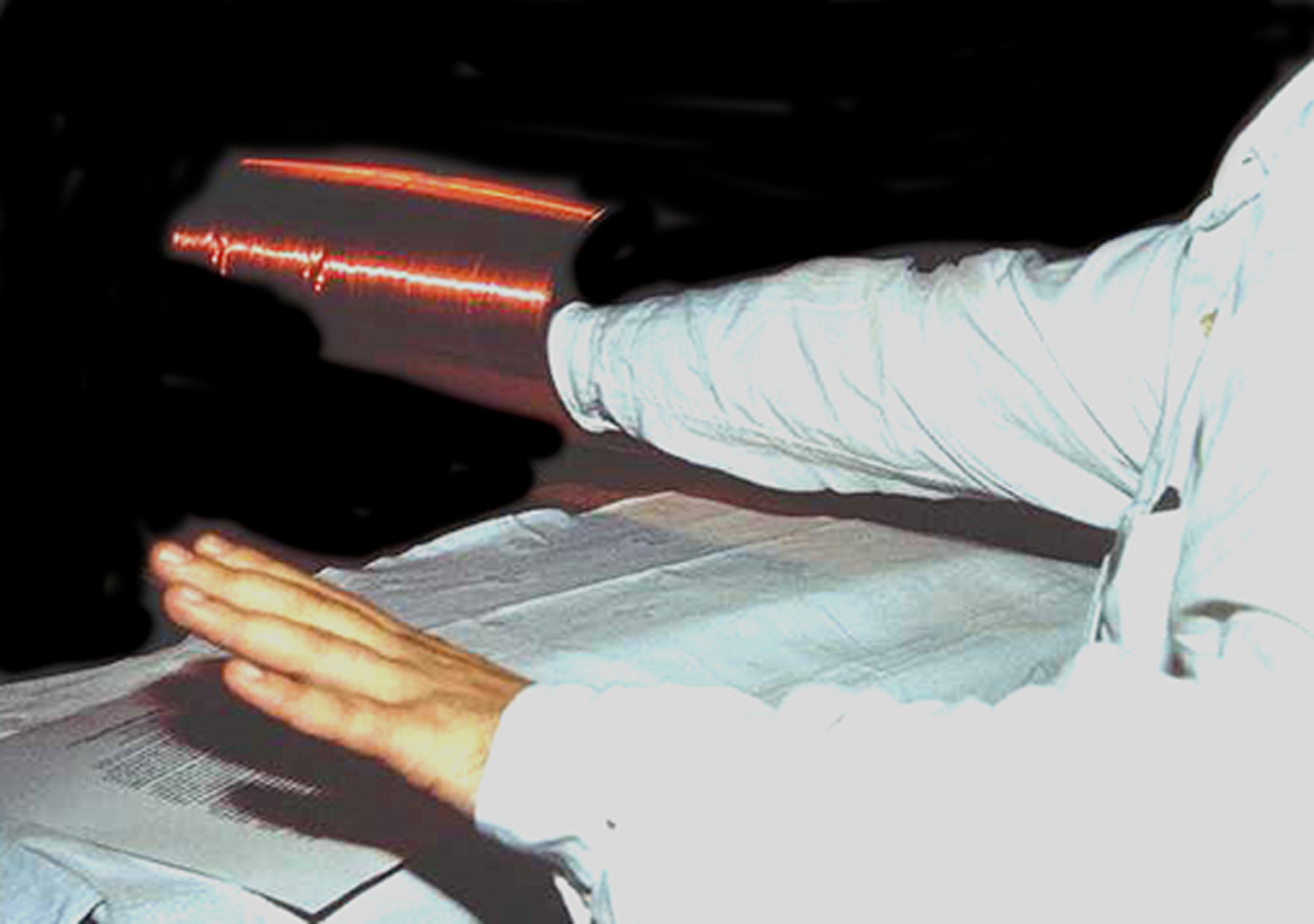Ken Goldberg, Richard S. Wallace: The Data Mitt
Artist(s):
Title:
- The Data Mitt
Exhibition:
Category:
Artist Statement:
“In all the arts there is a physical?component.”?- Paul Valery,?Aesthetics, 1934
“Reach out and touch someone.”?-American Telegraph and?Telephone, 1985
The physical component has been?almost totally neglected in “computer?art,”which uses lasers, pen-plotters, and?photo-offset techniques to produce?purely 2D images lacking tactile quality.?Cut off from the body, there is no trace?of the “hand of the artist.” Hence, it is?especially difficult to assess the value of?an art object produced in this manner.
There is a parallel void in digital?communications: we can transmit and?receive voice and coarse images, but we?cannot reach out and touch anything.?The current interest in virtual reality?suggests that we can overcome this?limitation through new technology. As?these technical barriers begin to fall,?more subtle barriers will emerge. The?Data Mitt suggests one such barrier.
The Data Mitt offers an elementary?means of telecommunication. The user is?invited to place their hand into an electromechanical?device containing a binary?sensor (a squeeze ball that allows the user?to transmit one bit of information), and a?binary actuator (a primitive direct-drive?motor that allows the user to receive one?bit of information). This information is?transmitted via digital modem to a symmetric?arrangement at the other end of?an ordinary telephone line. In this way we?introduce a physical component into digital?telecommunication: two users can?hold hands at a distance.
The Data Mitt is a low-bandwidth?version of the Data Glove. The Data?Glove has become a virtual reality icon,?which strives to incorporate the user’s?body into the computer interface.With?precursors like the Hawaiian Shirt and?the Exoskeleton from the early days of?tele-operation, to the Air Force’s Heads?Up display from the 1980s, this effort?has a long history. Getting the computer?to provide realistic feedback in?the form of pressure or tactile stimuli?has proven elusive, partly due to the?technical problem of time delays. Yet?as technology closes the gap, we must?ask, “What is at stake when a person?wears such a device?”
Historically, devices that require?the insertion of the body have not, for?the most part, been used to provide?pleasure. Fictional examples include?the apparatus in Kafka’s The Penal?Colony and the Gorn Jabbar in Frank?Herbert’s Dune. In Rome’s Piazza Bocca?della Verita, there is a church built by?Pope Hadrian in 772 A.D. In an alcove,?the stone mask of a local, pagan river?god is affixed to the mouth of a water?conduit. According to legend, if a person?lies and inserts his hand into the?Bocca della Verita, the Bocca will bite?off the offender’s hand.
This legend suggests Freud’s Vagina?Dentata. Rather than unpack nuances?of this reference, we borrowed?the Latin term for mask, persona, for?our subtitle. In the contemporary?world of computer-based art and telecommunications,?this may be the last?refuge for the hand of the artist.
All Works by the Artist(s) in This Archive:
- Ken Goldberg
-

Inter Caetera Divina
[SIGGRAPH 1992] -

Legal Tender
[SIGGRAPH 1996] -

Finger Paint
[SIGGRAPH 1991] -

The Data Mitt
[SIGGRAPH 1993] - Richard S. Wallace





